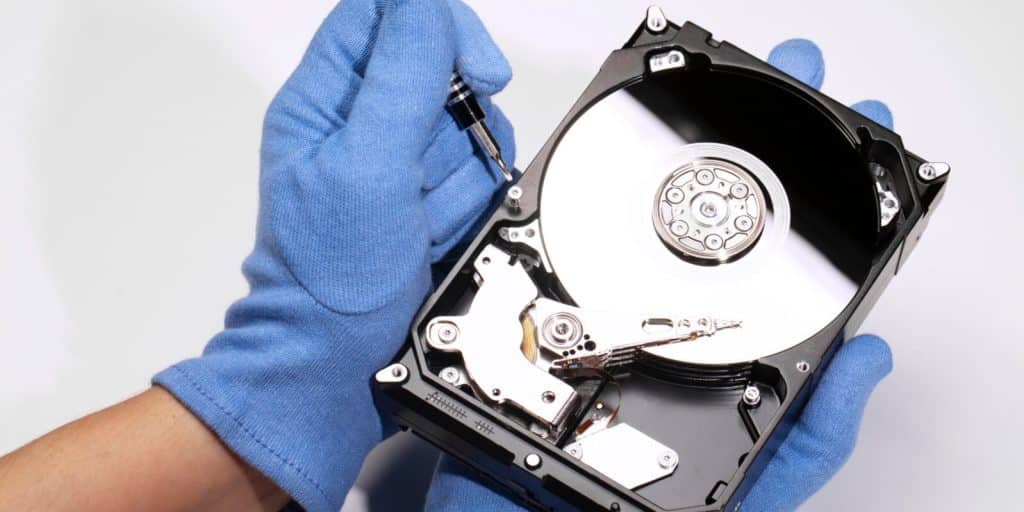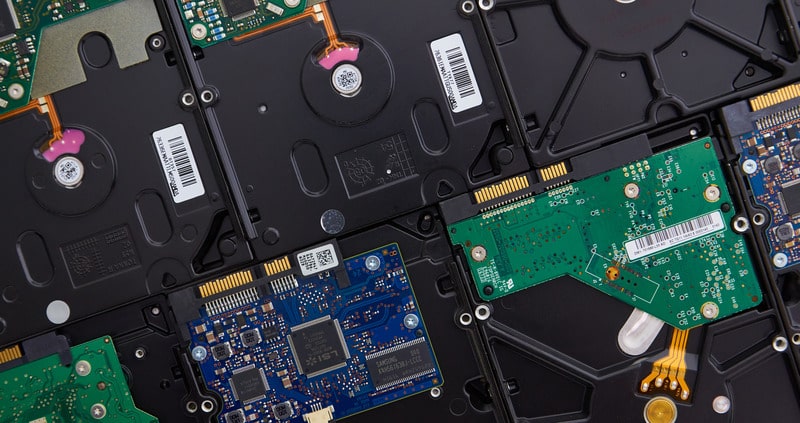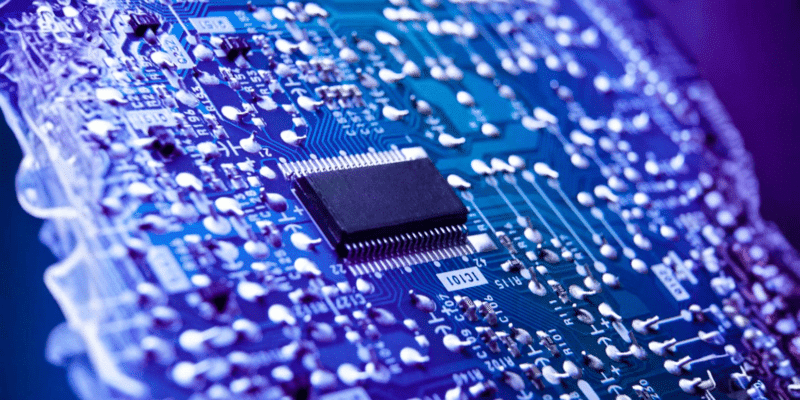Understanding the Difference Between NVMe and SSD: A Simple Guide
Developers
If you use a cloud server, you’re probably already familiar with data storage. Storage technology plays a crucial role in determining performance, efficiency, and cost-effectiveness. NVMe and SSD are two of the most commonly discussed storage technologies.
Solid-state drives (SSDs) are themselves a huge performance leap ahead of traditional hard disk drives (HDDs). But within the SSD storage category itself, there’s another key distinction: NVMe drives. NVMe stands for Non-Volatile Memory express. Let’s break down their key differences and understand their implications for cloud services and your projects.
What is SSD?

Solid state drives (SSDs) represent a considerable advancement over traditional hard disk drives (HDDs). The SSD market is projected to grow from $17.79 billion in 2024 to $82.22 billion by 2032, according to a report from Fortune Business Insights, citing increasing demand from enterprise companies, gamers, and data center applications. Unlike HDDs with moving mechanical parts like spinning disks, SSDs use flash memory to store data, resulting in:
- Faster read/write speeds
- Lower power consumption
- Increased durability
- Reduced mechanical failure risk
What is NVME?
Designed specifically for solid-state storage, NVMe creates a direct, high-speed pathway between storage and the computer’s CPU. Because of this communication, NVMe technology is compatible with all major operating systems, regardless of form factors. The result is a storage solution that speaks the language of modern computing with remarkable efficiency. Key characteristics of NVME SSDs typically include:
- Drastically reduced latency
- Higher input/output operations per second (IOPS)
- More efficient communication between storage and CPU
- Optimized for parallel processing
In a nutshell:
- All NVMe drives are SSDs, but not all SSDs are NVMe.
- NVMe SSD drives are a superior interface than traditional SSD technology like SATA drives or SAS interfaces.
What is a SATA SSD interface?

The predecessor of NVME, the SATA interface, dates back to 2003. It is used to link computer storage with data transfer and transmission. This includes an ATA command which ensures compatibility with previous system systems to minimize data loss. A SATA SSD is typically capable of transferring data at a maximum of 600MB/s, while NVMe drives can achieve speeds up to 7000 MB/s.
SSD vs NVMe hosting
Although SSD drives and NVMe SSD drives are both upgrades compared to the spinning disks of traditional hard disk drives, they each have different performance characteristics. SSDs use older SATA or SAS-type drives as a memory device. NVMe SSD technology skips the SATA drives to use the new PCIe connections, for faster write speeds and larger storage capacities. Whether you’re an everyday user, looking for improved gaming performance, or a DevOps specialist with database response times on your mind, you’ll have to decide at some point which server storage technology to use.
Critical differences between NVME vs SSD
We’ve come a long way since the spinning disks model of hard drives. And technology continues to advance at record speeds. Here are some of the key advantages of NVMe drives over older interfaces like SATA:
- Higher bandwidth: Allows for much faster data transfer speeds.
- Lower latency: Reduces the time it takes to access data, resulting in faster write speeds.
- Parallelism: Enables multiple commands to be processed simultaneously, improving efficiency.
Interface and communication
The fundamental difference lies in how these technologies connect to computer hardware. Traditional SSDs typically use SATA drives or SAS interfaces, which act like narrow bridges between storage and processing. NVMe, on the other hand, leverages the PCIe slot, bypassing traditional limitations and offering significantly higher bandwidth. This, combined with smaller form factors, creates a superhighway for data transfer that allows information to flow exponentially faster and more efficiently.
Performance metrics
Performance tells the real story of technological advancement. SATA SSDs can achieve read/write speeds up to 600 MB/s—impressive by previous standards. NVMe SSD drives, however, obliterate those limits, consistently exceeding 6,000 MB/s, which means your computer boots in seconds, games load instantly, and creative projects render effortlessly.
Latency
SATA SSDs operate with an average latency of 80-100 microseconds, which is already substantially faster than traditional HDDs. NVMe dramatically reduces this to 10 microseconds or less, creating near-instantaneous data access that can revolutionize computational performance. Higher data transfer speeds are the key to responsiveness.
Benefits of NVME SSD

NVMe revolutionizes storage performance through its groundbreaking architecture. Unlike traditional interfaces, NVMe supports up to around 64,000 queues with approximately 64,000 commands each, enabling unprecedented parallel processing. This means complex computational tasks can be executed simultaneously, dramatically reducing wait times and system bottlenecks.
While traditional storage interfaces heavily rely on CPU resources for data transfers, NVMe streamlines this process. This efficiency is crucial for data-intensive workloads such as machine learning, real-time analytics, and high-frequency trading platforms, where every microsecond counts.
Energy efficiency is another advantage of NVMe drives. Compared to traditional hard drives, NVMe drives consume less power per operation. This leads to major long-term cost savings for cloud infrastructure. Reduced power consumption also translates to less heat generation, extending hardware lifespan and minimizing cooling requirements for your computer hardware.
Top 6 use cases for an NVMe SSD upgrade
For businesses evaluating storage upgrades, NVMe SSDs provide significant performance benefits in specific scenarios. Here are six key use cases where the superior data transfer rates of NVMe drives make a measurable difference:
1. Enterprise database operations
When managing large-scale databases with frequent read/write operations, NVMe’s superior IOPS (input/output operations per second) and lower latency can dramatically improve query response times. Some clients can see 30-40% faster transaction processing after upgrading their database servers to NVMe storage. This is particularly valuable for data transfer where milliseconds matter, like financial institutions, Forex traders, and e-commerce platforms.
2. Virtual machine hosting
Organizations that are running multiple VMs or have set up a virtual private cloud could benefit immensely from the typical NVMe’s high data transfer rates. The ability to handle 64,000 simultaneous commands makes NVMe ideal for environments where numerous virtual machines compete for I/O resources.
3. AI and Machine Learning workloads
NVMe’s high bandwidth and low latency significantly accelerate data analytics workflows. This is crucial for data scientists and AI researchers who require rapid access to massive datasets. These speeds reduce model training times and improve iteration speeds when working with large files. NVMe SSDs also provide more storage, necessary to accommodate the ever-increasing size of AI models and their associated training datasets.
4. Media production and 4K video editing
Content creators working with high-resolution video files and large media assets will notice immediate benefits. NVMe device’s sequential read and write speeds of up to 7000 MB/s enable seamless playback of multiple 4K video streams and near-instant scrubbing through timeline editing.
5. High-performance computing (HPC)
Scientific simulations and complex calculations in HPC environments demand fast data access. NVMe drives eliminate storage bottlenecks in computational workflows, allowing researchers to process larger datasets more efficiently. We’ve seen simulation times reduce by up to 60% in certain HPC applications.
6. Real-time analytics
Organizations running real-time analytics platforms need storage systems that can maintain full speed while handling rapid data ingestion and analysis. NVMe’s low latency and high throughput enable faster processing of time-sensitive data streams, making it ideal for applications like financial trading algorithms, IoT data processing, and customer behavior analytics.
Remember that while NVMe hard drives command a premium price, the performance benefits often justify the investment in these use cases. The key is identifying whether your specific workload will benefit from NVMe’s advantages over traditional SATA SSDs.
Frequently asked questions
Can you use NVMe drives and SATA SSD in the same system?
Yes. Most modern computers can run SATA and NVMe drives at once if the required port is available. They could coexist and complement each other, with the SSD storage handling a demanding task and the NVM memory offering more space. Use multiple SATA SSD drives with a laptop for extra capacity if a single SSD cannot meet its specifications.
Does NVMe make a noticeable difference in everyday use?
For basic tasks like web browsing and office applications, the difference might not be very noticeable. However, for tasks involving large file transfers, video editing, gaming, or database operations, the performance improvement is significant.
Can I use multiple NVMe drives in my system?
Yes, you can typically install more than one NVMe drive in modern computers, especially those with multiple M.2 slots. This allows for increased storage capacity, improved performance for applications that benefit from multiple drives (like RAID configurations), and can even be used to create separate drives for the operating system, games, and other data.
Does NVMe reduce game loading times?
Yes, but the improvement varies by game. Some games may load only a few seconds faster, while others might see more substantial improvements, especially in open-world games that frequently load new assets.


